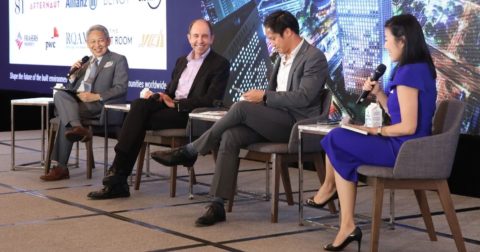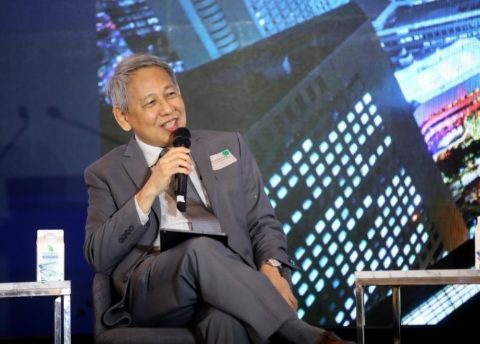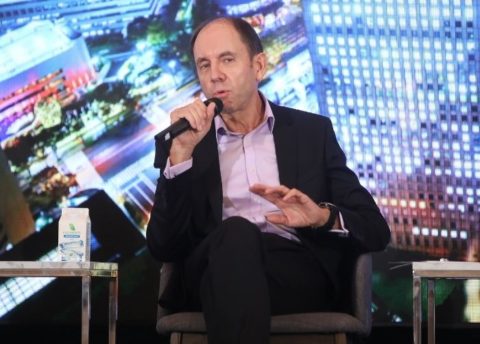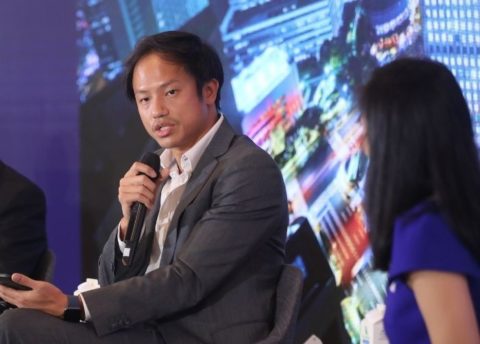Top Story
Dreaming of Singapore's Future with Bold Ideas
The Keynote addresses Singapore's Future of Living, Future of Work, Future of the Environment and Future of Mobility
Building a home is not just about making a safe structure for people to reside in.
It’s more than just about living spaces – it’s about lifestyle. This was the opinion of a panel of experts who had lively discussion on the topic of the “Future of Living” at the 2022 ULI Singapore Annual Conference.
In Singapore, the Housing & Development Board (HDB) has been providing affordable public housing to the majority of the population since it was established in 1960. With its developments over the years, it has become known for establishing exemplary models of affordable housing combined with quality living.
But what will the affordable housing of tomorrow look like?

Panel discussion moderated by Jaelle Ang, CEO and Founder, The Great Room

Fong Chun Wah, Senior Advisor, Housing & Development Board (HDB)
Fong Chun Wah, Senior Advisor at HDB, shared during the panel session that the HDB’s vision and mission is to provide a total living environment and ensure that this environment is able to sustain communities, in the present and beyond.
“We look at all the amenities that people need for daily living and, even during this time of Covid, we find that this comprehensive planning and accessibility to facilities is very important, because then you don’t have to travel all the way downtown to get your services,” he explained.
“Looking to the future, we have rolled out a new roadmap that looks at living well, living green and living smart.”

David Hutton, Group Head of Development, Lendlease
This view doesn’t just relate to public housing. David Hutton, Group Head of Development for Lendlease, acknowledged during the discussion that this projected future is not just about the buildings alone. He said it’s about the quality of living, the quality of the city, the quality of the district, as well as connectivity, community and amenities.
“Working in Singapore requires developers to do good work and it’s great to work in a competitive market,” he shared. “I think there’s a big change happening now in Singapore in terms of the sophistication of construction and how we use technology. Increasingly, it’s about how we curate and manage property, not just in how we create it.”
“It’s really encouraging seeing the Urban Redevelopment Authority (URA) start to open up bigger and bigger sites, and have the opportunity for master-plan sites, because I really believe people don’t just buy an apartment, they buy a quality of life, a lifestyle, and that’s something we’re very focused on,” he added.

Lim Kian Fong, Managing Director and Country Head, Singapore, Hines
Lim Kian Fong, Managing Director and Country Head for Singapore at Hines, agreed with the consumers’ expectation of purchasing a lifestyle. As a private developer, he admitted that he tried his best to build developments as part of the larger community around it.
“Within the living sector, the demand for wellness aspects of residential developments is
increasing but it doesn’t stop there,” he noted. “The best value you can bring for your end-users still is in choosing what brings the real value, in terms of the suite of amenities that works for each precinct.”
Lim added that, within the residential sector, his firm aspires to use data analytics to help shape the end product, which then conforms to the unique characteristics of each location.
“We’re trying to project whether it’s a build-to-sell model or build-to-rent model,” he elaborated.
“What is the current profile of what we imagine the end-users will be in a certain specific location? What is the projected profile going to be five years down the road? We map out that profile in terms of what design factors we think could play a part, such as how often do people dine in or dine out within a certain precinct, what kind of lifestyle are people having within that same precinct and then incorporating that into the overall design.”
The way forward in Singapore for the HDB follows a roadmap called “Designing For Life”, which encapsulates ideas in designing a better living environment, building homes and towns with smart and sustainable features, and the forging of closer communities for residents.
One of the drivers for this roadmap is that people in Singapore want to live well and they want to live healthily. The silver population, and the needs of that segment of society, is another factor.
“We need to look at what are the needs of the aging population, as well as the needs of different segments of the population and the more diverse society,” said Fong. “We need to look at both the physical as well as social well-being of people living in Singapore.”
Another important aspect for developers, builders and owners to consider is the onset of climate change. With this in mind, the HDB wants to make sure that its new developments are green and sustainable. This has also meant that HDB has had to go back to some of its older developments to improve them in terms of sustainability.
While there undoubtedly would be some new challenges to tackle in the coming years, the panel remains positive about the future of the industry.
“I think the determining factor is the quality of liveability and the challenge for us and the next generation is to be able to do that sustainably,” said Hutton.
“The real estate sector contributes a huge amount to society so my dream for the future would be that that’s really appreciated and we can all take a lot of pride in the fact of what we contribute to the quality of society and the legacy that we leave behind.
Don’t have an account? Sign up for a ULI guest account.